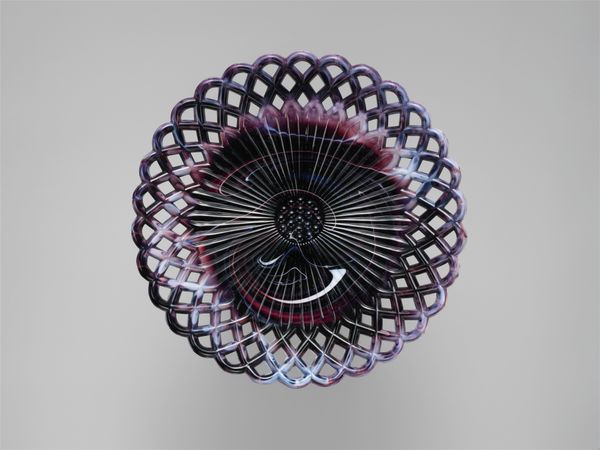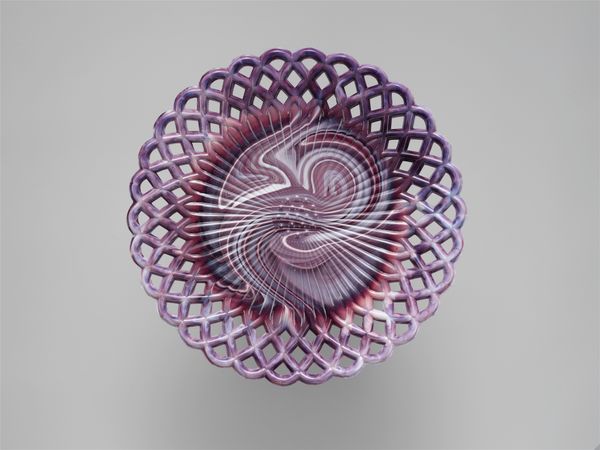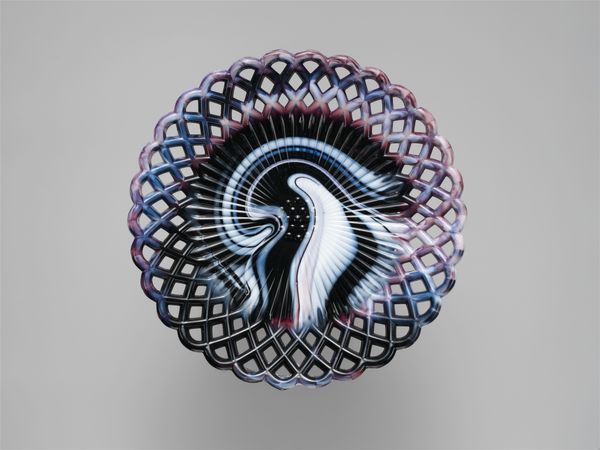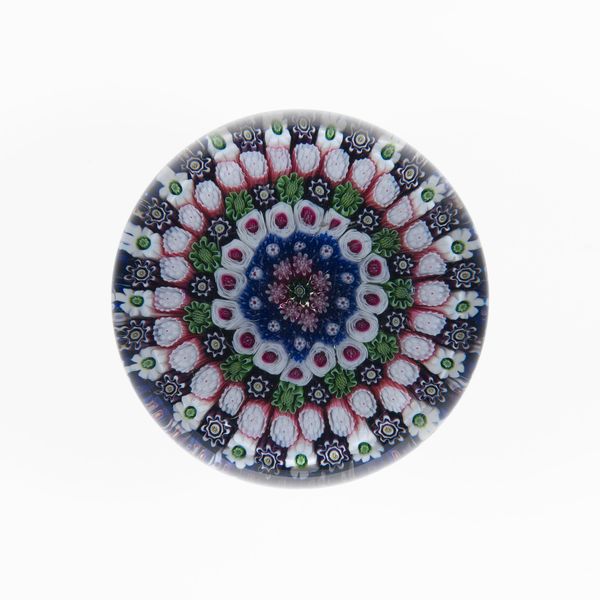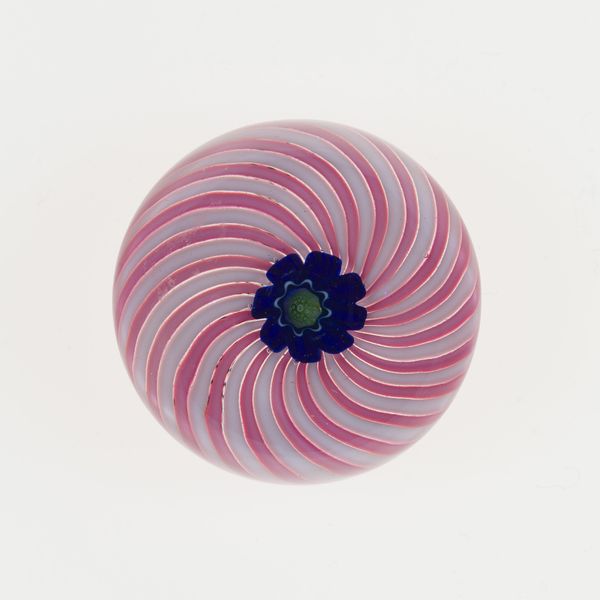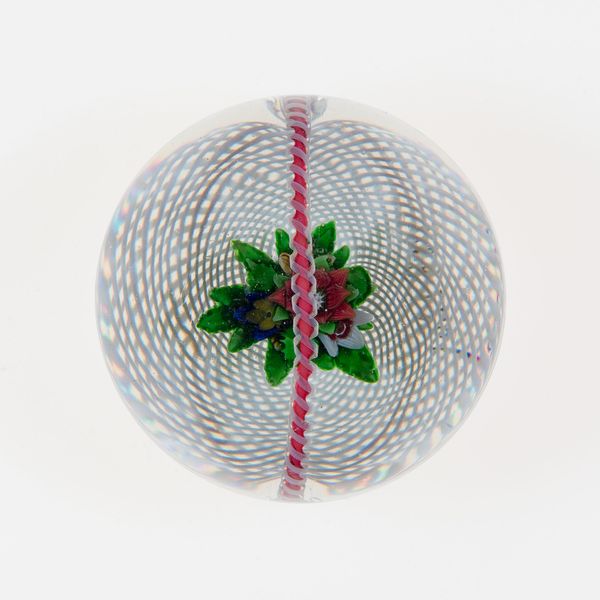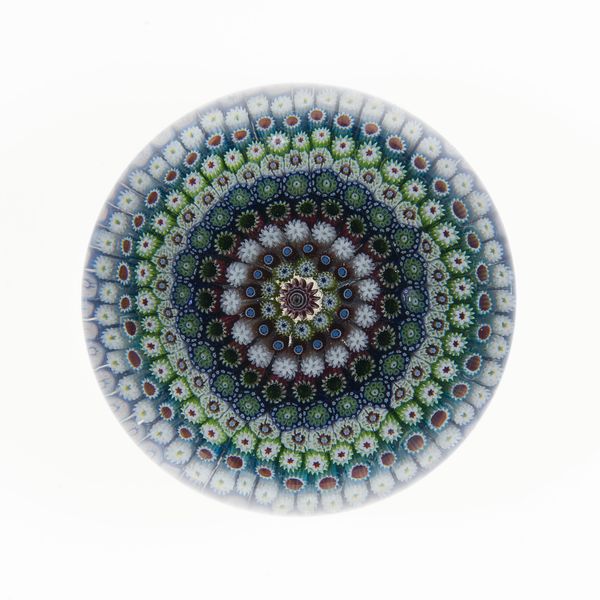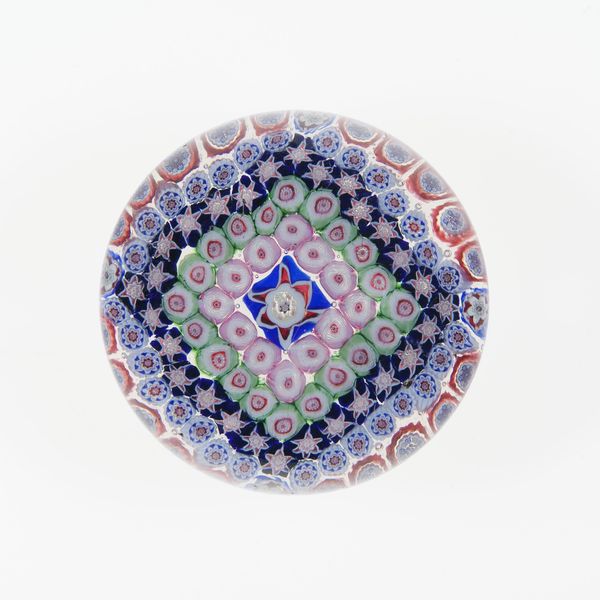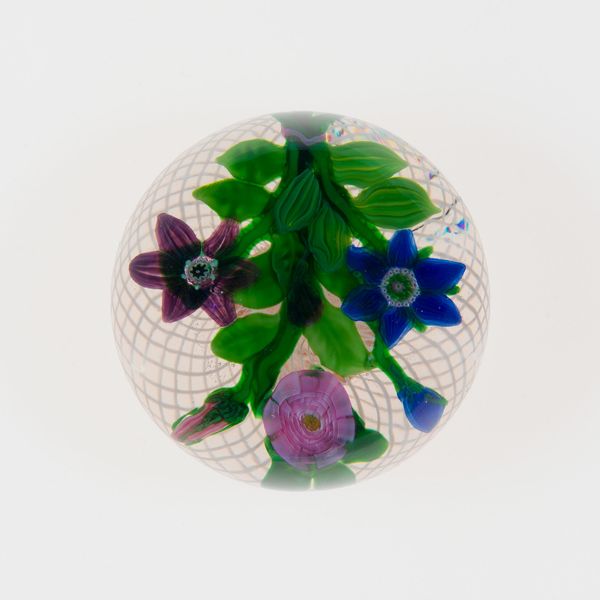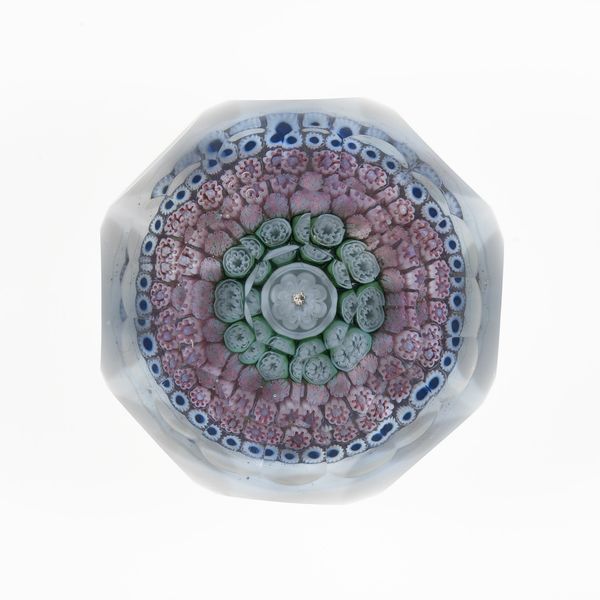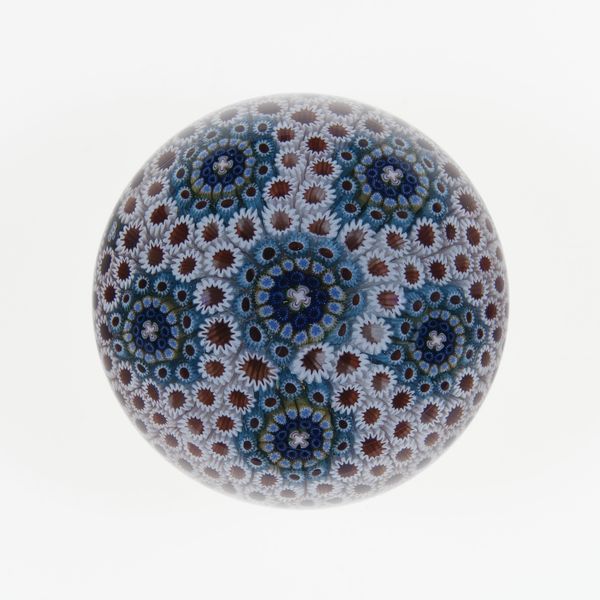
ceramic
#
pattern
#
ceramic
#
round design
#
abstract pattern
#
minimal pattern
#
geometric
#
flower pattern
#
united-states
#
decorative-art
Dimensions: Diam. 10 3/8 in. (26.4 cm)
Copyright: Public Domain
Curator: Alright, let's take a look at this "Plate," dating from 1870 to 1890. It’s attributed to Challinor, Taylor and Company and resides here at the Metropolitan Museum of Art. Editor: Wow, immediately I think…spiderweb, but also very delicate. I mean, that violet color fading into the cream along the lattice—it's almost ethereal, like a dream you can’t quite grasp. Curator: It’s a stunning example of late 19th-century decorative art. Plates like this were often mass-produced, which democratized beauty, making visually stimulating pieces accessible to a broader segment of the population, thereby engaging in broader cultural and aesthetic shifts. How do we consider this from intersectional narratives of class and taste formation? Editor: It's interesting because, even mass-produced, someone chose that gradient, right? They mixed that purple and dreamt of where to put it. I think that speaks to human touch and ingenuity. Almost like a rebellion against the industrial, a longing for beauty amid the mechanics. I wonder what the artist felt making it. Curator: Absolutely, and we can't overlook the socio-economic factors influencing the availability of this piece. While mass-produced, decorative arts held a peculiar space within the Victorian household, embodying aspirations towards refinement. Also the aesthetic choices—the floral motif, the geometric repetitions—reflect the design trends heavily influenced by botanical studies of the era and the ongoing negotiation between the Arts and Crafts Movement. It is also worthwhile to investigate the political status and access to ceramic manufacturing across Europe and North America in that era. Editor: You’re totally right, context is everything! Looking again, though, beyond the societal stuff… There's a sense of order but a tiny chaos too. You have perfect radiating lines and a dark heart—then this bubbly lace barely holding on. That's life isn’t it? Structure, mess, and just barely hanging on. Curator: Indeed! And hopefully our listeners are walking away from this object thinking about more than just its material value. It’s an embodiment of cultural forces at play, reflecting everything from industrial shifts to artistic responses. Editor: Yeah, and maybe a little hope that even mass-produced beauty can have soul if you look close enough. It is not about holding it, but to feel how gravity act upon it.
Comments
No comments
Be the first to comment and join the conversation on the ultimate creative platform.
